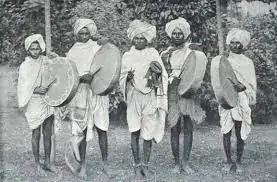
History of the Madiga Community
Origins and Early History
The Madiga community, historically known as “Chandala,” has its roots deeply embedded in the ancient history of India. Traditionally, the Madiga people have been involved in leatherwork, which was a crucial occupation in historical Indian society. Their skills in leather tanning and crafting leather goods were highly valued, but their work also led to social stigmatization under the rigid caste system.
Cultural and Social Contributions
Despite facing discrimination, the Madiga community has made significant cultural and social contributions. Their traditional knowledge of leatherworking not only supported various economic activities but also preserved important cultural practices. The community’s artisanship is renowned for producing durable and intricate leather products, which have been essential for agricultural and everyday use in rural India.
Colonial Era and Struggles
During the colonial era, the Madiga community faced significant challenges as British policies often reinforced the existing caste hierarchies. However, this period also saw the emergence of social reformers and movements that began to challenge these oppressive structures.
- The introduction of Western education created new opportunities for the Madiga community.
- Social reform movements, such as those led by Jyotirao Phule and others, began to advocate for the rights of marginalized communities, including the Madiga.
- The colonial period also saw the beginning of organized efforts to address the social and economic injustices faced by the Madiga people.
Struggles for Equality
The history of the Madiga community is marked by a long struggle for social justice and equality. The oppressive nature of the caste system relegated them to the margins of society, but their resilience has been a testament to their strength. Over the centuries, the Madiga people have continually fought for their rights and sought to elevate their social status.
Post-Independence Developments
After India’s independence in 1947, the Indian Constitution abolished “untouchability” and provided a framework for affirmative action to uplift the socio-economic status of marginalized communities, including the Madiga.
- The implementation of reservation policies in education and employment provided new opportunities for the Madiga community.
- Several movements and organizations, such as the Madiga Reservation Porata Samiti (MRPS), have been at the forefront of advocating for the rights and reservations for the Madiga community.
- Notable leaders from the Madiga community have emerged, contributing significantly to various fields, including politics, education, and social activism.
Modern Movements and Achievements
In recent times, the Madiga community has seen significant progress in terms of social and economic mobility. Movements advocating for Dalit rights, of which the Madiga are a part, have gained momentum, leading to better representation in various sectors. Education and political activism have played crucial roles in this transformation.
- Notable leaders from the Madiga community have emerged, championing the cause of social justice and working towards the upliftment of marginalized sections of society.
- Their efforts have led to greater awareness and the implementation of affirmative action policies aimed at improving the socio-economic conditions of the Madiga people.
Prominent Figures
- Dr. B.R. Ambedkar: Although not a Madiga, Dr. Ambedkar’s work for Dalit rights has had a profound impact on all Dalit communities, including the Madiga.
- Katti Padma Rao: A renowned activist and leader who has worked extensively for the rights of the Madiga community.
- Madiga Reservation Porata Samiti (MRPS): An organization dedicated to advocating for the rights and reservations for the Madiga community in India.
Continuing the Legacy
Today, the Madiga community continues to strive for social justice and equality. Efforts are ongoing to preserve their cultural heritage while simultaneously seeking modern advancements. Education, economic development, and political representation remain key focus areas as the community works towards a brighter future.
Timeline of Key Events
- Ancient Times: The Madiga community, historically known as “Chandala,” involved in leatherwork.
- Colonial Era: Emergence of social reformers; new educational opportunities.
- 1947: India’s independence and the abolition of “untouchability.”
- Post-1947: Implementation of reservation policies; rise of movements and organizations advocating for Madiga rights.
- Modern Times: Significant progress in social and economic mobility; continued efforts for social justice and equality.

